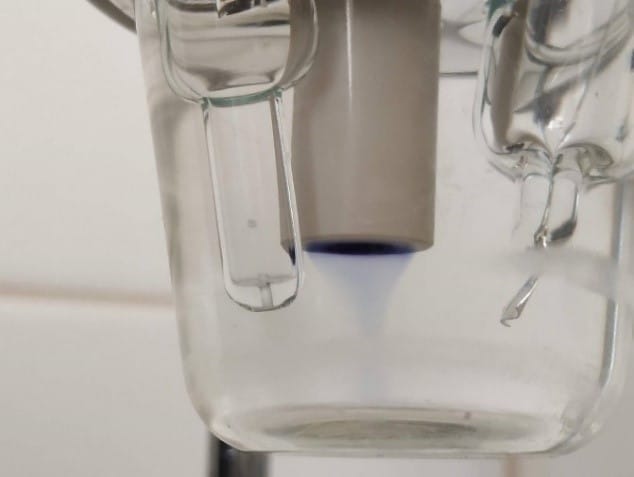After synthesizing a variety of organic electrolytes, the next crucial step is to characterize their electrochemical properties. This includes evaluating parameters such as the kinetic constant, the diffusion rates of charged and uncharged species, and their solubility in water. These factors determine the feasibility of implementing the organic molecules in a redox flow battery (RFB).
To achieve this, the synthesized molecules were analyzed using Cyclic Voltammetry (CV) and Rotating Disk Electrode (RDE) measurements. These techniques provide valuable insights into the performance and behavior of the electrolytes under operational conditions.
For an organic electrolyte to be considered promising, it must meet the following criteria:
- High solubility in the supporting electrolyte, whether in acidic, neutral, or basic environments.
- Appropriate redox potential to maximize the energy density of the RFB.
- Chemical and electrochemical stability, preventing degradation or side reactions.
- Fast redox kinetics and favorable diffusion coefficients for both redox states.
- Sustainability and safe handling, ensuring environmentally friendly and secure use.
- Wide operational temperature range, making it suitable for diverse climates.
- Cost-effective synthesis, ensuring scalability and economic feasibility.
Among the various organic electrolytes synthesized during the second phase of the IPCEI project, those that meet these criteria will be further implemented and tested in InoHub’s lab-scale cells to evaluate their real-world performance.
ACKNOWLEDGEMENT:
This work was supported by the project: IPCEI_IE_FLOW_BESS_012021_2. phase


